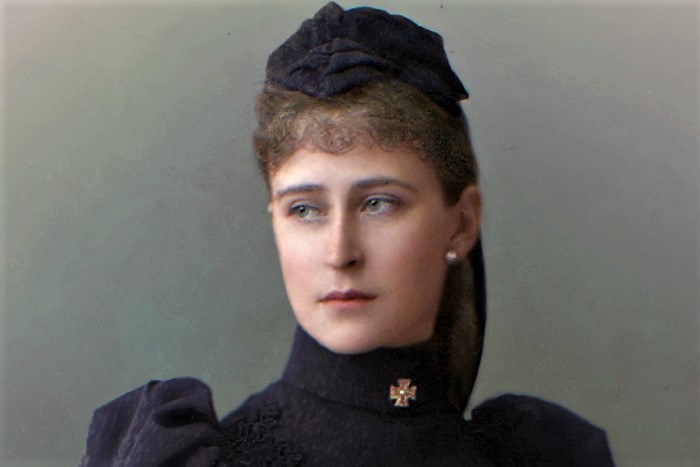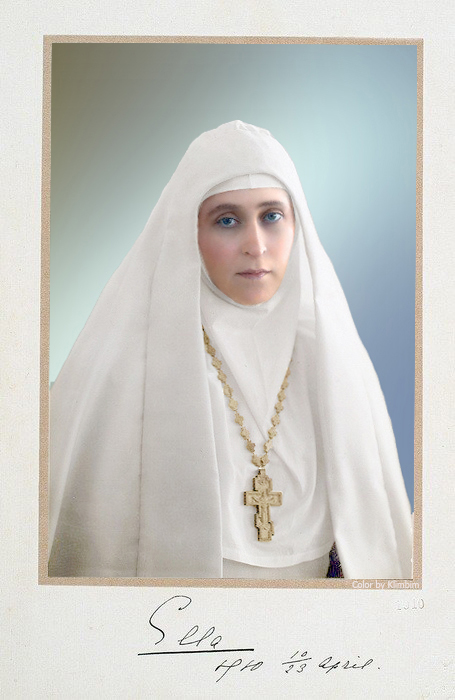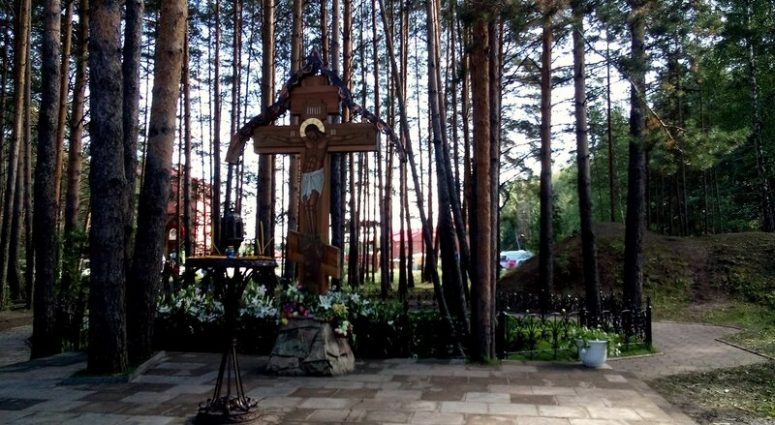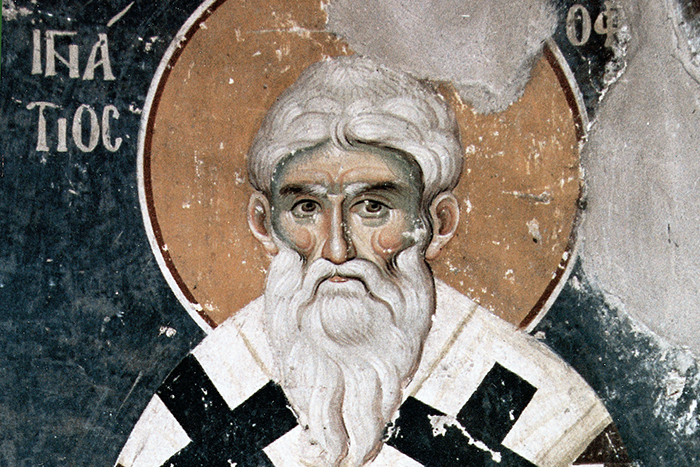
Seventy-two days — that’s how many days the life of Grand Duchess Elisabeth lasted after her arrest. On the third day of Easter, on May 7, 1918, after the moleben served by Patriarch Tikhon, matushka was arrested.
One of the Petrograd newspapers of that time – “Novy vecherny chas” (The New Evening Hour) – reacted to this event in a note dated May 9, 1918: “…we do not know what could cause her expulsion… It is hard to imagine that Elizabeth Fedorovna could be some kind of danger for Soviet power. Her arrest and expulsion can rather be regarded as … a proud gesture against Wilhelm, whose brother is married to Elizabeth Fedorovna’s sister…”
On May 11, Elisabeth Feodorovna was transported to Yekaterinburg. At that time, the Royal family was there, but during nine days of the sisters’ presence in the same city, they never met. By May 1918, fourteen representatives of the Romanov dynasty had already been gathered in Yekaterinburg. Elisabeth Feodorovna’s neighbors in “Atamanovskie nomera” (“Ataman’s rooms”, a hotel in Yekaterinburg) were Grand Duke Sergei Mikhailovich, young Duke Vladimir Poley, and dukes Igor, Konstantin and John with his wife Elena Petrovna (children of Grand Duke Konstantin Konstantinovich Romanov), Fedor Semenovich Remez, Grand Duke Sergei Mikhailovich’s associate executive, as well as nun Varvara (Yakovleva), the lay sister of Mother Elisabeth.
Soon the Bolsheviks decide to transfer them to Alapaevsk. From the testimony of the guard Kabanov: “When we arrived at the station “Alapayevsk”, an elderly man in working clothes, armed with grenades at his belt and with a pipe in his mouth entered the compartment and said: get ready, come to the exit, we’re here”. They were put on peasant carts and taken to the outskirts of the town. Nun Varvara, who was the Grand Duchess’s lay sister, was free to leave at any time. She signed a receipt confirming that she stayed under arrest and undertook to support herself at her own expense voluntarily.

The prisoners were not sitting idle in Alapaevsk: they put a garden and grew flowers. But this did not last long. The events of the early morning of July 18, 1918 can be restored with the help of a testimony in a criminal case.
P. Govyrin, the Chairman of the Special Inquiry Commission, says: “Just before the retreat from Alapayevsk, we discussed the issue of ducal nobility’s eliminating in the party organization. At one of the party meetings we decided to get rid of them. There were 6 of them. At first, they felt free, especially when the “pilgrimage” started – ordinary people came to see what kind of people they were, townspeople started to bring them milk, berries, etc., and that was the moment we got it should be stopped; we put them under military regime. After some given freedom, we did not let them out anymore.
We explained that the town was small, and this was done so that there would not be any kind of gossips and chatters… It needs to be mentioned that the workers went to guard those people with particular pleasure, they were looking forward to see them. “When will these dukes finally fall for some charge? How long they will walk here? What on earth! The Soviet government does not judge anyone, but still punishes the dukes”, – we thought. We pretended that someone flew on an airplane for the dukes; it was necessary to be portrayed in front of the lay audience. We exploded a bomb near the school after taking them away to the mine, showing that we “fought” against the airplane. We treated them in not completely civilized manner – we threw them into the mine alive. It was impossible for us to perform such operation. We put those people on horses. We told them that we were taking them deep into the rear, that we were temporarily forced to retreat, that we were transporting them to a safe place. People believed it. When we stopped at the mine, they asked: “Why have we stopped?” I answered: “The bridge is broken; guys are fixing it”. And at that time, when there was that delay, we performed the operation. After that, we set guard, of course. In the morning we took one communist, put a bandage on his head, put him on a cart and drove him around Alapayevsk, as if he had been wounded. Thus, the impression was made that the dukes were taken away on an airplane. So, no one knew that they were made away with in such way. Thus, the locals calmed down…”

L. Seredkin, the Chairman of Verkhnyaya Sinyachikha’s Rural Council: “After arriving at the place I said: “You need to get off the horses, the peasants blew up the bridge, you have to go this way on foot”. When they got to that place, they just fell into the mine; and it was done. That was how we put them there. We wanted to bring them to the bottom, but there was another layer, so they stopped there, and as a result survived. We wanted to blow up the mine, we lowered overxeline drafts into it…, but they got into the water. We needed to do something to finish them already… I had bombs in my closet so I gave a key to K. for him to bring them… After that we just filled the mine with those people inside”.
An autopsy conducted in the fall of 1918 showed that the injuries were incompatible with life, and it was unlikely they sang psalms. However, due to an unexploded bomb near the body of Elisabeth Feodorovna we have her relics nowadays. The body of the Grand Duchess was the last to be raised from the mine on October 11, 1918. She had an icon of the Savior on her chest, presented by Alexander III on the day of the conversion to Orthodoxy. She stepped into eternity with it.


